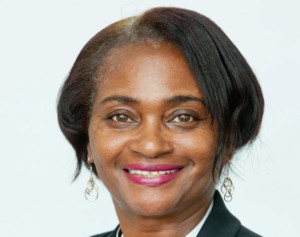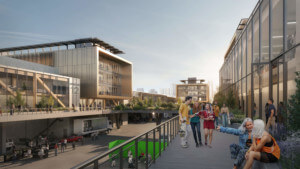The Cultural Landscape Foundation (TCLF) will be holding a day-long symposium on November 4 at the Architecture and Design Museum in Los Angeles in conjunction with the opening of The Landscape Architecture of Lawrence Halprin, a photographic exhibition based on Halprin’s body of work.
As its name implies, the symposium—titled Landscape as Catalyst: Lawrence Halprin’s Legacy and Los Angeles—will focus on the seminal landscape architect’s lesser-known Los Angeles–based projects. The symposium will “examine the influences and accomplishments” of Halprin’s Los Angeles work and will be held as part of a series of national public events organized by TCLF honoring Halprin’s local and national legacy.
The Architect’s Newspaper’s West Editor Antonio Pacheco will be moderating a panel discussion at the event titled Focus on SoCal: Maguire Gardens, the Open Space Sequence, and Plaza Las Fuentes. The panel discussion will delve into key works from Halprin’s Los Angeles–area legacy. Speakers on the panel include Robert Maguire III, the Los Angeles developer who commissioned several of Halprin’s L.A.–based projects; Merry Norris of Merry Norris Contemporary Art who led the art and sculpture programs for these projects; Douglas A. Campbell of Campbell & Campbell landscape architects; and Patrick Reynolds, Parks Manager and City Landscape Architect for the City of Culver City. Campbell served as the associate landscape architect for the Grand-Hope Park and Maguire Gardens.
Los Angeles Open Space Sequence
Halprin’s work in Downtown Los Angeles is typified by the so-called Los Angeles Open Space Network, which was an outgrowth of a 1980 proposal by developer Maguire Partners for “A Grand Avenue,” a linear spine of parks and civic spaces that would be both “people-oriented and activity-generating,” according to the TCLF website.
The 11-acre plan was never fully realized but helped to lay the foundation for a collection of four public open spaces along Hope Street that work in tandem to further the urban and social life of the downtown area. Included in this sequence are Crocker Court (now Wells Fargo Court) at the base of SOM-designed, 54-story Crocker Tower complex from 1983; the Bunker Hill Steps at the base of the Pei, Cobb, Freed, & Partners‘ 73-story Library Tower from 1989; Library Square (now Maguire Gardens) surrounding the Bertram Goodhue–designed Los Angeles Central Library from 1926; and Grand Hope Park surrounding the Fashion Institute of Design and Merchandising (FIDM) from 1993.
The sequence of spaces was designed to stitch Bunker Hill’s postmodern towers together with a forthcoming apartment and condominium district to the south known as South Park. The public open spaces—designed alongside other skyscraper and plaza complexes in the area—were meant to create a series of leisure and recreational nodes throughout the district and came to fruition hand-in-hand with postmodern-style architectural projects designed by nationally-recognized firms. The open space projects represent landmark works of Halprin’s late career that utilize water features, dynamic and carefully-staged processions, and symbolic planting and architectural configurations to shape the perception of open space in L.A.’s downtown area.
Much like Freeway Park in Seattle, the entire sequence was designed as an interconnected trail of plazas, forecourts, and parks that offer a variety of leisure spaces while also navigating the 100-foot difference in elevation between the top of Bunker Hill and the FIDM campus. The difference here is that by the early 1990s, Halprin was engaged full-tilt with multiple facets of the postmodern style—softening austere, mirrored corporate abstraction at the Crocker Court end of the sequence while repurposing historical symbols and elements in the Bunker Hill Steps and Grand-Hope Park projects.
Plaza Las Fuentes
Plaza Las Fuentes in nearby Pasadena, on the other hand, was built in 1984 as part of a new mixed-use development for the satellite city’s downtown core. The plaza accompanied an eight-story office tower and 12-story hotel and shopping complex—also developed by Maguire Partners—designed by architects Moore Ruble Yudell. The plaza features Moorish Revival arcades, decorative tile walls designed by the artist Joyce Kozloff, and is populated with sculptures created by Michael Lucero. The park’s geometric fountains guide occupants through the plaza’s stepped site, incorporating sculptures, fountains, and plantings throughout.
For more information on and tickets to the Landscape as Catalyst: Lawrence Halprin’s Legacy and Los Angeles symposium, see TCLF’s website.










